| Botanical Name |
|
| Family |
Crassulaceae - The crassula family. |
| Pronunciation |
|
| Common Name(s) |
English: Heart-leaf crassula
|
| Plant Group |
- Succulent A plant having fleshy stems or leaves often adapted to dry conditions.
|
| Plant Size |
- Small to Medium
| Tree | 8m to 15m |
| Shrub | 75cm to 1m |
| Perennial/ground cover | 20cm to 40cm |
| Bulb | 30cm to 40cm |
| Succulent | 20cm to 40cm |
|
| Position |
- Dry Shade Shady areas where soil has poor water retention or are dependent on rain for their moisture needs.
- Light or Dappled Shade Found below trees with sparse, open foliage. Ideal for the protection of herbaceous plants.
- Partial Shade The area is in shade for part of the day and in full sun for part of the day.
- Sun The area is in full sun for all or most of the day, all year round.
|
| General Information |
- Drought Tolerance: High The plant is well adapted to arid conditions; it can survive long periods of drought and high temperatures without extra water.
- Evergreen Plants that have leaves all year round.
- Frost: Tender A plant that will not survive any frost or low winter temperatures.
- Water Wise Plant species originating from low rainfall regions that require less water to survive and thrive than other plant species.
|
| Specific Information |
Crassula cordata is a succulent plant with erect, sparsely branched stems. The rounded, heart-shaped leaves have a fine red margin and vary from light green in the shade to grey-green in the sun. The leaf surfaces are densely punctuated with small pores or 'stomata', which tun red in drier conditions. After flowering, the flower heads produce plant 'buds' - tiny plants which fall to the ground and grow.
|
| Ad Break |
|
| Flowers |
| Description |
loose bunches of tiny star-shaped flowers on thin stems, held above the leaves
|
| Season |
- Winter to Spring Plants will seldom bloom for the entire season as given in the list, but should flower during a period within these parameters.
|
| Colour |
|
| Growth Rate |
- Moderate to Fast Specifying growth rate can be very misleading as there is considerable variation of growth rate depending on type and species of plant, available water, supplementary feeding, mulching and general care, as well as the plants suitability and adaptability to the garden environment.
|
| Plant Uses |
- Edging A low growing plant that provides softness or definition to the edges of a bed or walkway.
- Filler Either a fast growing tree or shrub used temporarily to fill in an area while the permanent plants grow to a desired size, or a plant used to fill gaps in borders or beds.
- Ground Cover Low-lying plants that spread fast, require minimal maintenance, and cover large expanses or bare areas between bulbs or shrubs. They provide protection from erosion and drought and improve the visual appearance of the garden.
- Rock Garden An area constructed of larger rocks, arranged naturally, to emphasise the use of stones as a main element. Generally plants used do not need a lot of care.
- Suitable for coastal gardens Plants adapted to dry, sandy soil, forceful wind, limited rainfall and intense sunlight.
- Wild Garden An indigenous garden planted for the benefit of wildlife and birds. Provides food, water, a variety of mini-biomes and no poisonous chemicals are used.
|
| Distribution and Habitat |
from Humansdorp in the Eastern Cape to southern KwaZulu-Natal, in Albany thicket, fynbos, grassland, Indian Ocean coastal belt and dry scrub vegetation, often under trees or shrubs
|
| Planting Suggestions |
Plant in well-drained soil and water lightly until established. If the soil is very depleted or drainage is too fast or too slow, mix some well rotted organic compost into the soil before planting. Mulch lightly. Performance is improved if the plant gets some shade, at least during the worst heat of the day. Tip off the growing points to encourage bushy growth.
|
| Lorraine's Garden Notes |
A very useful filler plant requiring little attention other than an annual pruning of overly tall stems. I have found this crassula resistant to insects attacks and disease.
|
| Medicinal Uses |
|
| Ad Break |
|


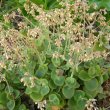
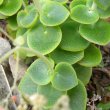
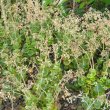
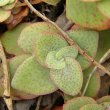

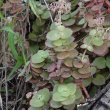


Discuss this plant
Share knowledge, ask a question or give an experience.